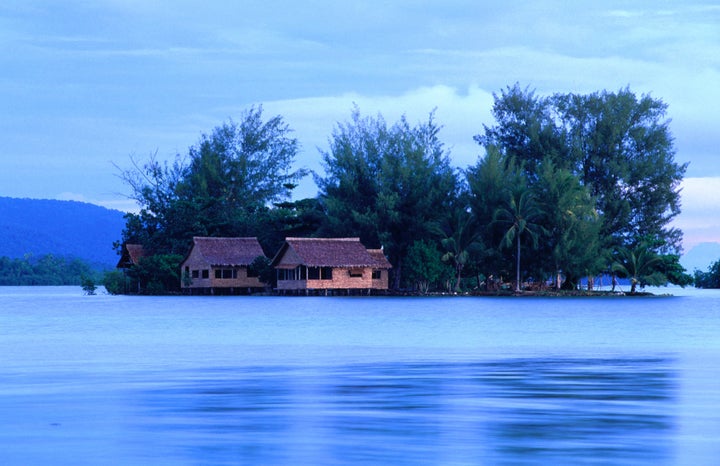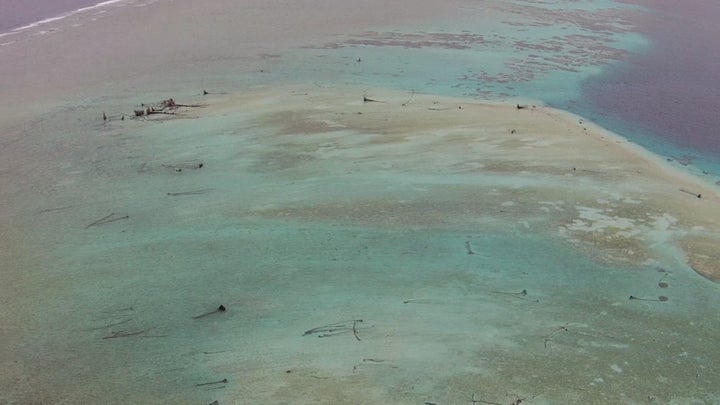Scientists' warnings that climate change will cause rising sea levels to swallow large swaths of land is playing out in the Solomon Islands.
At least five islands there have plunged completely below the ocean's surface over the past several decades. Numerous others in the South Pacific island nation appear to be headed for a similar fate, a new study has found.
“It’s a perfect storm,” co-author Simon Albert of the University of Queensland study told New Scientist. "There’s the background level of global sea-level rise, and then the added pressure of a natural trade wind cycle that has been physically pushing water into the Western Pacific."

This sovereign island nation northeast of Australia is no stranger to the threats that man-made climate change has brought on. The "global sea-level rise hotspot" has seen ocean levels rise 7-10 mm per year -- three times the global average, according to the study.
And what's happening in the Solomon Islands may be a dark preview of what the future has in store for island communities and coastal cities around the globe.
Albert and his team analyzed aerial and satellite imagery of 33 islands dating back to 1947 for their study, published in the journal Environmental Research Letters. They found that five -- Kale, Rapita, Rehana, Kakatina and Zollies -- along the northern coast of Isabel island have vanished, most of them as early as 2002. Six others, including the inhabited island of Nuatambu, are "experiencing severe shoreline recession," they found.
"These islands lost to the sea range in size from [2.5 to 12 acres]," the authors wrote in an article published in The Conversation. "They supported dense tropical vegetation that was at least 300 years old. Nuatambu Island, home to 25 families, has lost more than half of its habitable area, with 11 houses washed into the sea since 2011."
In addition to forcing residents of small villages from their homes, the study notes that Taro, the capital of Choiseul Province, is "set to become the first provincial capital globally to relocate residents and services due to the threat of sea-level rise."

The story unfolding in the Solomon Islands is an all-too-familiar one.
The New York Times published drone footage in December showing the drastic impacts rising seas are having on communities in the Marshall Islands.
In Alaska, climate change already affects more than 180 villages, with the Yupik community of Newtok among the hardest hit. And in Louisiana, a Native American tribe was forced to flee its home on the Isle de Jean Charles, becoming among the first communities of climate refugees in the U.S.
Researchers involved in the Solomon Islands study say they hope their findings -- a first-of-its-kind assessment for the region -- will help guide planning and mitigation efforts moving forward.
“The rates we have recently seen in the Solomons will be experienced globally in the second half of this century," Albert told The Washington Post.

